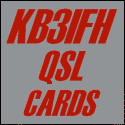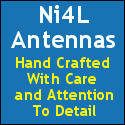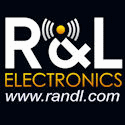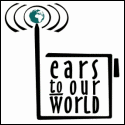Posts Tagged ‘emcomm’
 Erroneous Prepper Frequency Lists
Erroneous Prepper Frequency Lists
Many “emergency frequency lists” showing up on the internet are a hodgepodge of frequencies scraped from various sources and assembled into what looks like a credible list. Some of these frequencies are useful, but too many are misleading and perhaps even dangerous. These lists gloss over training and licensing issues, as described here: The Talisman Radio.
 Many of these lists are generated by copying other prepper lists or scanning various sources for “emergency frequencies.” Even this Wikipedia page about international distress frequencies includes some of this misinformation.
Many of these lists are generated by copying other prepper lists or scanning various sources for “emergency frequencies.” Even this Wikipedia page about international distress frequencies includes some of this misinformation.
Important Disclaimer: People often point out that in many jurisdictions, a citizen without a radio license for a specific frequency can still make a call in case of a true emergency (usually defined as potential loss of life or property). This may be true, but it is generally not a good emergency communications strategy: See The Talisman Radio. Most of these lists do not address the issue of radio licensing at all, which is very misleading.
Here is a recent FCC action to consider: The FCC has ruled that a ham radio operator in Idaho must pay a record $34,000 penalty for interfering with wildfire communications on 151.145 MHz. This is a US Forest Service frequency not authorized for amateur radio licensees. So don’t be transmitting on unauthorized frequencies.
Misleading Frequency Lists
One of the worst frequency lists is shown here by Stryker Radios. This “Ham Radio Emergency Frequencies” list shows 29 frequencies, but only two are in the ham bands. The rest are a collection of airband, marine, FEMA, search and rescue, National Guard, US Air Force, etc. Most of these frequencies are not legal for the general public to use. An FCC amateur radio license permits operation on the two ham radio frequencies listed but nothing else. The 4Patriots has a similar list, leaving out the ham radio frequencies and calling the list “other emergency radio frequencies.” The Save Net Radio website also has a poorly thought-out frequency list. But they compound their errors with this statement:
It’s important to note that these frequencies aren’t just for professional rescuers and emergency workers; they can also be used by ordinary citizens who are equipped with the appropriate radio equipment.
This is incorrect and potentially dangerous.
Some Specific Frequencies
These emergency frequencies have three main uses: situational awareness (listening to learn what is happening in your environment), distress calls (calling out to anyone for help), and coordination with friends (communicating with friends and associates about supplies, health and welfare, transportation, weather, etc.)
We must consider our radio’s capabilities, specifically the frequency range (for transmit and receive, which may differ) and modulation type (AM, FM, SSB, etc.). The typical low-cost VHF/UHF radio that is so common (Baofeng UV-5R or similar) has a frequency range of 136 to 174 MHz (VHF) and 400 to 520 MHz (UHF). Many of these radios are shipped with their transmit frequency limited to the amateur (ham) radio bands: 144 to 148 MHz and 420 to 450 MHz. However, there may be a method to enable (or unlock) the entire frequency range for transmitting. Check the specifications of your radio model. These radios are almost always FM only, so no AM or SSB. Some radios can receive AM in the aircraft band but won’t transmit AM.
Listening to radio activity around you can be very helpful in understanding situational awareness. A good example is listening to your local fire or law enforcement channels. You can hear some of these frequencies using a low-cost VHF/UHF radio but a scanner that receives digital signals will be a lot more useful.
Let’s examine some of the frequencies in the Stryker list. I will skip the frequencies outside the typical VHF and UHF tuning ranges listed above, as your radio most likely won’t be able to tune them.
138.225 MHz: Primary FEMA channel for disaster relief operations.
This frequency is in the federal VHF band, but I could not confirm a specific usage.
To transmit on this frequency, you need federal authorization.
146.52 MHz: Ham radio frequency for non-repeater communications on the two-meter band.
This is the 2m FM calling frequency, which is generally lightly used. You may hear interesting traffic on this frequency but need a ham radio license to transmit on it.
151.625 MHz: Utilized by mobile businesses such as circuses, exhibitions, trade shows, and sports teams. Other channels in use are 154.57 and 154.60 MHz.
This is an itinerant business band frequency known as the Red Dot channel. The other two frequencies listed are MURS Channels 4 and 5. They may be useful to program in.
154.28 MHz: Local fire department emergency communication channel. Additional frequencies include 154.265 and 154.295 MHz.
These are Fire Mutual Aid channels (VFIRE21, VFIRE22, VFIRE23) set aside for when multiple fire districts need to communicate. Typically, each district has their own radio frequencies and only uses these when a large incident occurs with multiple agencies responding. An FCC license for these specific frequencies is required to transmit on them.
155.160 MHz: Local and state agency channel for search and rescue operations.
This is the most common VHF frequency for Search and Rescue. To transmit on it, you need an FCC license for this specific frequency.
155.475 MHz: Local and state police emergency communication channel.
This is a Law Enforcement Mutual Aid channel (VLAW31) set aside for when multiple law enforcement agencies need to communicate. An FCC license for this frequency is required to transmit on it.
156.75 MHz: International maritime weather alerts channel.
This is marine channel 15, receive only, reserved for listening to emergency locator beacons. This is not a normal communication channel and is probably not useful in an emergency.
156.80 MHz: International maritime distress, calling, and safety channel.
This is marine channel 16, the calling and distress channel, which may be useful in coastal areas, lakes, and waterways that have significant marine radio activity. This frequency is for marine / boating use using a certified VHF marine transceiver.
162.40 MHz to 162.55 MHz: Series of channels used for NOAA weather broadcasts and bulletins. Also 163.275 MHz.
These well-known weather broadcast stations cover a large portion of the US and are very useful to have programmed in your radio. Do not transmit on these frequencies.
163.4875 MHz: Nationwide emergency channel for the National Guard.
163.5125 MHz: National disaster preparedness frequency for the armed forces.
164.50 MHz: National communication channel for the Department of Housing and Urban Development.
These are federal frequencies requiring federal authorization to transmit on them.
168.55 MHz: Federal civilian agency channel for emergencies and disasters.
This frequency is assigned exclusively to smoke jumpers working on wildfire suppression.
Do not transmit on this frequency.
409.20 MHz: National communication channel for the Interstate Commerce Commission.
409.625 MHz: National communication channel for the Department of State.
These are federal frequencies requiring federal authorization to transmit on them.
462.675 MHz: General Mobile Radio Service channel for emergency communication and traveler assistance.
This is Channel 20 on GMRS and FRS radios. This frequency is probably useful, but it is subject to the GMRS and FRS rules.
Some of these frequencies may be useful to monitor in an emergency (situational awareness), but very few are available for distress calling or communicating with friends.
RadioMaster Reports Frequency List
This list originated on the Radiomaster Reports website and has spread around the web in various forms (see below). It is one of the better prepper frequency lists, but it still has some issues.
 The FRS and GMRS frequencies are useful to have available. The PMR UHF frequency (446.03125 MHz) listed is actually in the 70 cm ham band in the US and is a non-standard frequency, so it should not be used at all in the US. (PMR is a European standard.) The CB frequencies listed are not available on your typical low-cost VHF/UHF handheld but are useful if you have a CB radio. The so-called CB Freeband frequencies are never legal for use and your standard CB won’t tune them.
The FRS and GMRS frequencies are useful to have available. The PMR UHF frequency (446.03125 MHz) listed is actually in the 70 cm ham band in the US and is a non-standard frequency, so it should not be used at all in the US. (PMR is a European standard.) The CB frequencies listed are not available on your typical low-cost VHF/UHF handheld but are useful if you have a CB radio. The so-called CB Freeband frequencies are never legal for use and your standard CB won’t tune them.
The low-band VHF frequency of 33.4 MHz will also not work with your typical handheld radio. The FCC license database shows many businesses are licensed to operate on this frequency, including many fast food restaurants. I suppose if you want to order a hamburger in an emergency, it might work.
If you have the appropriate amateur radio license, the Ham VHF and HF frequencies listed are usable in the US. On the 2-meter band, 146.52 MHz is indeed the nationwide calling frequency and was discussed earlier. However, the frequencies of 146.42 and 146.55 MHz do not always conform to local band plans, depending on the area of the country you are in. So you may or may not find activity there. The Search and Rescue frequency (155.16 MHz) was discussed earlier. The two marine frequencies listed do not require a license but should only be used for boating and similar communications.
Summary
We could continue to examine the specifics of all these frequencies and discuss their equipment requirements, licensing requirements, and proper usage. However, the main message is that these frequency lists are just a collection of random stuff compiled and propagated around the web. None of them are well-considered and most will likely not do you much good in an emergency. And they might lead uninformed citizens into using a frequency that can get them into a heap of trouble.
I have been looking for a list to recommend but have not found one. Let me know if you come across one that is truly useful.
That’s what I found. Let me know what you think.
73 Bob K0NR
References
National Field Operations Guide (NFOG)
https://www.cisa.gov/safecom/field-operations-guides
NTIA Redbook
https://www.ntia.doc.gov/publications/redbook-manual
RadioMaster Reports Frequency List
https://radiofreeq.wordpress.com/wp-content/uploads/2013/06/shtf_survivalist_radio_frequency_list.pdf
The post Erroneous Prepper Frequency Lists appeared first on The KØNR Radio Site.
 The Future of Emcomm
The Future of Emcomm
Here comes Starlink!
 I’ve been reading a number of reports from the areas affected by the two major hurricanes (Helene and Milton). The North Carolina experience is particularly interesting because people have experienced the loss of communication and electrical service for several weeks. I can imagine this same thing happening in other parts of the country, including my area.
I’ve been reading a number of reports from the areas affected by the two major hurricanes (Helene and Milton). The North Carolina experience is particularly interesting because people have experienced the loss of communication and electrical service for several weeks. I can imagine this same thing happening in other parts of the country, including my area.
There are two important technology disruptions showing up in North Carolina: satellite-based internet (Starlink) and mobile-phone-to-satellite (SMS) text messaging. Starlink is having a significant impact during this incident, while mobile phone satellite messaging is still emerging. Steve N8GNJ has some worthy thoughts on these topics in Zero Retires 173. Although I have served in many ARES/RACES deployments over the years, I don’t consider myself an expert in this area. I’d appreciate comments from Emcomm folks who have spent more time thinking about this.

Types of Emergency Communication
Most relevant emergency comms lump into 1) short-range comms (< 5 miles) between family, friends, and neighbors. 2) medium-range comms (50 miles) to obtain information and resources. 3) long-range comms (beyond 50 miles) to connect with distant family, friends, and resources.
- Short-Range Comms: This is the type of communication that is well served by mobile phones, except when the mobile networks are down. This is happening a lot in North Carolina. Lightly licensed VHF/UHF radios such as FRS and GMRS can be used to replace your mobile phone. Think: wanting to call your neighbor 3 miles away to see if they are OK or can provide something you need. (I have a few FRS/GMRS radios in my stash to share with neighbors. See TIDRadio TD-H3) VHF/UHF ham radio is, of course, even better for this, except the parties involved need to be licensed. (OK, you can operate unlicensed in a true emergency, but that has other issues. See The Talisman Radio.)
- Medium-Range Comms: This is a great fit for VHF/UHF ham radio using repeaters or highly-capable base stations. GMRS repeaters can also serve this need. These communications will typically be about situational awareness and resource availability in the surrounding area. For example, someone on the local ham repeater may know whether the highway is open to the place you want to drive.
- Long-Range Comms: Historically, this has been done by HF ham radio and a lot of emergency traffic is still handled this way. The shift that is happening is that setting up a Starlink earth station feeding a local WiFi network can help a lot of people in a very effective manner. Compare passing a formal piece of health-and-welfare traffic via ham radio to letting a non-licensed person simply get Wi-Fi access to their email or text messaging app. Hams are doing this, but many unlicensed techie folks have set up these systems and freely shared them with the public.
Mobile Satellite Messaging
Various providers now offer a basic text messaging capability using smartphones talking to satellites. Today, this capability is often limited to emergencies (“SOS”), and it is relatively slow. With time, this capability will certainly improve and basic satellite texting will be ubiquitous on smartphones. This will be great for checking in with distant friends and families, but it may not be that useful for Short Range and Medium Range comms. Someday, it might include voice comms, but in the near term, it is probably just text-based.
Evan K2EJT provides some useful tips based on his experience here in this video. However, he doesn’t address the Starlink capability.
Summary
While much of the public appreciates the usefulness of ham radio during emergencies, I am already hearing questions like “Doesn’t Starlink cover this need?” My view is that Starlink (and similar commercial sats) is very useful and will play an important emcomm role, but it does not cover all of the communication needs during incidents such as hurricanes, blizzards, wildfires, earthquakes, etc. Emcomm folks (ARES and RACES) will need to adapt their approach to take this into account.
Those are my thoughts. What do you think?
73 Bob K0NR
The post The Future of Emcomm appeared first on The KØNR Radio Site.
 Vacuum Tubes – Electronics at Work: 1943 Educational Film
Vacuum Tubes – Electronics at Work: 1943 Educational Film
In the classic educational film titled “Electronics at Work,” produced by Westinghouse in 1943, viewers are introduced to the fascinating world of vacuum tubes. This film highlights the crucial role these devices played in both military and commercial sectors, including radio telecommunications, radar, and various industrial applications. The narrative suggests that vacuum tubes provided the United States with a significant advantage during World War II, particularly in enhancing communication and technology.
The Continuing Relevance of Vacuum Tubes
Despite advances in technology, vacuum tubes remain in use today for several applications, including:
– Transmitting radios
– Medical devices
– Audio amplification systems
– High-frequency applications
Understanding Vacuum Tubes
The film outlines the six basic functions of electronic tubes and illustrates how each type is employed in different industrial and military contexts.
[embedyt] https://www.youtube.com/watch?v=ZJ6rN7WEjbc[/embedyt]
Structure of a Vacuum Tube
A vacuum tube typically consists of two or more electrodes housed within a vacuum inside an airtight enclosure. Key features include:
– Electrode Types: Most vacuum tubes have glass envelopes, although some utilize ceramic or metal casings with insulating bases.
– Leads and Sockets: The electrodes connect to leads that pass through the envelope via an airtight seal. These leads often take the form of pins, allowing for easy replacement in a tube socket, as tubes were a common point of failure in electronic devices.
– Capacitive Design: Some tubes feature a top cap on the electrode to minimize interelectrode capacitance, enhancing high-frequency performance and maintaining safety by separating high voltages.
The Evolution of Vacuum Tubes
The earliest vacuum tubes emerged from incandescent light bulbs, which contained a heated filament sealed in an evacuated glass envelope. When heated, the filament releases electrons into the vacuum through a process known as thermionic emission.
– Electrode Functionality: A second electrode, known as the anode or plate, attracts these electrons if it holds a more positive voltage. This mechanism results in a flow of electrons from the filament (cathode) to the plate, creating an electric field due to the potential difference between them.
– Diode Function: A vacuum tube with two electrodes is termed a diode, which functions as a rectifier. Diodes allow current to flow in only one direction, converting alternating current (AC) into pulsating direct current (DC). This technology is widely used in DC power supplies and in demodulating amplitude-modulated (AM) radio signals.
Film Availability and Production Details
This film is available in the public domain under Creative Commons, and it can be accessed through the Library of Congress Prelinger Archives. The film has been edited and converted to HD quality for better viewing. Introductory and closing music is provided by Nero 10, with commercial use rights granted.
This film not only serves as an educational tool but also highlights the enduring legacy of vacuum tube technology in the realm of electronics, illustrating its significant contributions to both past and present technological advancements.
Please subscribe to my YouTube Channel: https://YouTube.com/NW7US
Also, please click on the bell, to enable alerts so that when I post a new video, you will be notified. By subscribing and making sure that the bell (alert) notification is set to ALL, you will be kept in the loop for new videos and more.
 Exploring Shortwave Radio Signals: A Peek into Non-Local Communications
Exploring Shortwave Radio Signals: A Peek into Non-Local Communications
Curious about what you can hear on shortwave ham radio? This video is a brief survey of the diverse world of communications on the shortwave spectrum. Expand your radio horizons and enhance your emergency communication preparedness by tuning in to the world of shortwave ham radio.
If you’ve started delving into radio communications beyond local stations and channels, like VHF and UHF, you’re in for a treat. Shortwave radio opens up a whole new realm of signals to explore, including emergency communications vital during natural disasters.
[embedyt] https://www.youtube.com/watch?v=pIVesUzNP2U[/embedyt]
Shortwave radio covers a range of radio frequencies from 3 kHz to 30 MHz. This spectrum is home to a diverse array of radio signals that cater to various communication needs, making it a hub of activity and connectivity.
Within these high frequencies, you can tune in to a multitude of transmissions, from transoceanic air traffic control communications to the chatter of ships navigating the vast seas. Imagine hearing the voices of fishermen, much like those on your favorite reality TV shows about high-seas fishing adventures, along with military communications and the vibrant world of amateur radio enthusiasts.
One of the remarkable features of high-frequency (HF) radio is its ability to propagate signals over long distances, transcending line-of-sight limitations. This means that HF radio enables communication between different regions and even continents, fostering connectivity across vast distances.
During times of crisis and natural disasters, shortwave frequencies become invaluable for emergency communications. When local infrastructure falters or is disrupted, shortwave radio serves as a vital lifeline, facilitating critical two-way communications in and out of disaster-stricken areas.
Explore the fascinating realm of shortwave radio, where distant voices blend with essential information, bridging gaps and connecting communities in times of need. Uncover the power of HF radio to transcend boundaries and provide lifelines when they are needed most.
In this video, I give you a glimpse of the voice and data transmissions I pick up on my high-frequency amateur radio transceiver (in this video, an Icom IC-7000). In later videos, I will dive deeper into specific types of HF communications, such as aeronautical trans-oceanic signals.
 FRS3 For Colorado Backcountry
FRS3 For Colorado Backcountry
 The Colorado Search and Rescue Association is promoting FRS (Family Radio Service) Channel 3 as “the default during backcountry search and rescue (backcountry SAR) emergencies.” FRS channel 3 is the same as GMRS (General Mobile Radio Service) channel 3. There is more GMRS info here. To keep things simple, no CTCSS (“privacy code”) is used…carrier squelch only. See the CSAR announcement here: FRS Radio Use for Backcountry.
The Colorado Search and Rescue Association is promoting FRS (Family Radio Service) Channel 3 as “the default during backcountry search and rescue (backcountry SAR) emergencies.” FRS channel 3 is the same as GMRS (General Mobile Radio Service) channel 3. There is more GMRS info here. To keep things simple, no CTCSS (“privacy code”) is used…carrier squelch only. See the CSAR announcement here: FRS Radio Use for Backcountry.
For backcountry exploring, it is important to emphasize self-sufficiency and to avoid reliance on electronic gizmos that may fail. Avoiding an emergency situation is way better than having a device to call for help, which may be many hours away. See this article for a discussion of The Ten Essentials for Hiking.
Still, the FRS3 concept has merit. Many backcountry hikers already carry FRS or GMRS radios, so designating a preferred channel makes sense. My read on this is that randomly calling for help on FRS3 will not be very effective due to the limited range of FRS radios. However, it does not hurt to try. More likely, FRS3 can be used for local comms once Search and Rescue crews have been deployed and are within a few miles of the party in distress.
Ham radio operators may want to carry a handheld transceiver capable of transmitting on 462.6125 MHz. For emergency use only, of course.
73 Bob K0NR
The post FRS3 For Colorado Backcountry appeared first on The KØNR Radio Site.
 New Book: Learning, Living, and Loving Morse Code…
New Book: Learning, Living, and Loving Morse Code…
There is a new book from a fellow Morse code amateur radio operator, Chris Rutkowski (NW6V), about “Learning, Living, and Loving Morse Code (in a Digital World).” NICE!
Title: “The CW Way of Life“
link: https://amzn.to/3Tm3KfD
Already, I think it rivals any other book on the topic, including “The Art and Skill of…,” or, “The Zen of…”
It is not, however, meant to replace, but to augment, what is available. But, it is a complete guide, including a “work book” section (nearly half of the book?) on how to improve your skill. Really good stuff, but I’m only in one day.
73 de NW7US dit dit
https://nw7us.us
..













